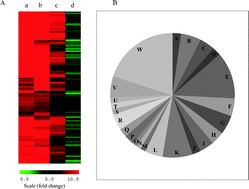Disulfide stress-induced aluminium toxicity: molecular insights through genome-wide screening of Saccharomyces cerevisiae†
Abstract
Formation of non-native

* Corresponding authors
a
School of Science and Health, University of Western Sydney, Locked Bag 1797, Penrith, NSW 2751, Australia
E-mail:
t.bailey@uws.edu.au, c.kersaitis@uws.edu.au, m.wu@uws.edu.au
Fax: +61 2 4620 3025
Tel: +61 2 4620 3213
Formation of non-native

 Please wait while we load your content...
Something went wrong. Try again?
Please wait while we load your content...
Something went wrong. Try again?
 Fetching data from CrossRef.
Fetching data from CrossRef.
This may take some time to load.
Loading related content
